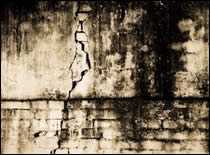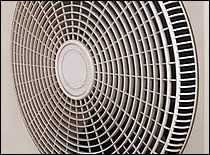Reentering Your Flooded Home
When returning to a home that’s been flooded after natural disasters such as hurricanes, tornadoes, and floods, be aware that your house may be contaminated with mold or sewage, which can cause health risks for your family.
When You First Reenter Your Home
-

If you have standing water in your home and can turn off the main power from a dry location, then go ahead and turn off the power, even if it delays cleaning. If you must enter standing water to access the main power switch, then call an electrician to turn it off. NEVER turn power on or off yourself or use an electric tool or appliance while standing in water.
- Have an electrician check the house’s electrical system before turning the power on again.
- If the house has been closed up for several days, enter briefly to open doors and windows to let the house air out for awhile (at least 30 minutes) before you stay for any length of time.
- If your home has been flooded and has been closed up for several days, presume your home has been contaminated with mold.
- If your home has been flooded, it also may be contaminated with sewage. See Flood Water After a Disaster or Emergency.
Dry Out Your House
If flood or storm water has entered your home, dry it out as soon as possible. Follow these steps:
-

If you have electricity and an electrician has determined that it’s safe to turn it on, use a “wet-dry” shop vacuum (or the vacuum function of a carpet steam cleaner), an electric-powered water transfer pump, or sump pump to remove standing water. If you are operating equipment in wet areas, be sure to wear rubber boots.
- If you do not have electricity, or it is not safe to turn it on, you can use a portable generator to power equipment to remove standing water. Note: If you must use a gasoline-powered pump, generator, pressure washer, or any other gasoline-powered tools to clean your home, never operate the gasoline engine inside a home, basement, garage, carport, porch, or other enclosed or partially enclosed structures, or less than 20 feet from any door, window, or vent, even if the windows and doors are open. Such improper use can create dangerously high levels of carbon monoxide and cause carbon monoxide poisoning.
- If weather permits, open windows and doors of the house to aid in the drying-out process.
- Use fans and dehumidifiers to remove excess moisture. Fans should be placed at a window or door to blow the air outwards rather than inwards, so not to spread the mold.
- Have your home heating, ventilating, and air-conditioning (HVAC) system checked and cleaned by a maintenance or service professional who is experienced in mold clean-up before you turn it on. If the HVAC system was flooded with water, turning on the mold-contaminated HVAC will spread mold throughout the house. Professional cleaning will kill the mold and prevent later mold growth. When the service determines that your system is clean and if it is safe to do so, you can turn it on and use it to help remove excess moisture from your home.
- Prevent water outdoors from reentering your home. For example, rain water from gutters or the roof should drain away from the house; the ground around the house should slope away from the house to keep basements and crawl spaces dry.
- Ensure that crawl spaces in basements have proper drainage to limit water seepage. Ventilate to allow the area to dry out.
- Page last reviewed: August 30, 2017
- Page last updated: September 14, 2017
- Content source:


 ShareCompartir
ShareCompartir

